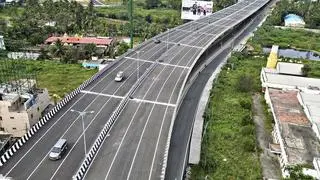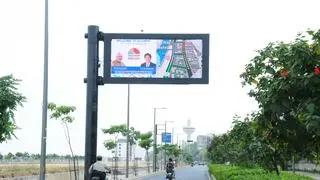As the government’s infrastructure development works gather pace, manufacturers of road construction equipment are optimistic of clocking double-digit growth rates in the next 5-6 years.
The ‘make in India’ promotion, too, is pushing original equipment manufacturers such as CASE India, Terex India and Schwing Stetter India to produce and export construction equipment that meets rigorous standards in developed markets. The evolving quality-conscious and competitive manufacturing ecosystem holds promise to emerge as an alternative to Chinese sellers.
According to the Indian Construction Equipment Manufacturers Association’s (ICEMA) report for FY24, the $9.5-billion sector employs nearly 30 lakh people and produces 1.36 lakh units annually.
The market is projected to grow to $25 billion by FY30 at a compounded annual growth rate of 14 per cent, fuelled by infrastructure spends. With a 60-lakh strong workforce, it is expected to produce nearly 2.6 lakh units annually, while its export earning swells to $3 billion from $0.7 billion.
Local manufacturing
Shalabh Chaturvedi, Managing Director of CASE Construction Equipment (India & SAARC region), says road construction equipment commands a significant share of the overall construction equipment business. Of the nearly 1.3 lakh units sold annually, less than 10,000 are exclusively for road construction but even the rest are directly or indirectly used in road laying.
He says CASE India is “very confident” of selling more than 10,000 construction equipment units annually by 2025, and that its Pithampur facility would become the second largest producer in this segment for parent company, CNH Global.
Schwing Stetter India, too, anticipates significant growth in its road construction equipment business in the next six years, amid stepped-up government spending, rapid urbanisation, technological advancements and the ‘make in India’ incentive, says its chief managing director, VG Sakthi Kumar.
“With rising income levels, there is growing demand for better infrastructure, including roads, which is expected to fuel investments in construction projects, further boosting demand for equipment,” he says.
The company has five manufacturing units in India, catering to domestic and global clients.
Terex India Managing Director Jaideep Shekhar estimates that the road construction equipment segment in India has enjoyed 10-12 per cent CAGR for several years now. He foresees continued growth over the next 8-10 years, given the pace of infrastructure development.
Chaturvedi anticipates an added boost from connectivity schemes such as Bharatmala (highways), Sagarmala (coastal and inland waterways), Pradhan Mantri Gram Sadak Yojana (rural roads), and dedicated freight corridors.
The emphasis on higher quality standards has led to greater mechanisation, especially in larger projects, which has aided the sale of road construction equipment.
Domestic sales hit 7 per cent CAGR during FY20-24, thanks to the rapid pace of road works, ICRA Sector Head (Corporate Ratings) Ritu Goswami says.
While foreseeing a downturn in domestic mining and sale of construction equipment in FY25, amid slackening award of road projects, she however expects the overall demand prospects to remain buoyant over the medium term, thanks to the robust expansion of logistics networks.
Export potential
Shekhar points to the growing overseas market for India-made machinery over the past 13 years.
“Terex has been exporting machines to the US and Europe since 2011-12 — 40-50 per cent of the production in India is exported, fetching valuable foreign exchange,” he says.
Seconding this, Chaturvedi says Indian machinery is increasingly making a dent in the sale of Chinese products.
Though China scores in terms of cost, there is growing interest in Western countries to source from India due to geopolitical reasons. This is aiding export growth, he says.
Sakthi Kumar highlights India’s status as a ‘China+1’ country for construction equipment sourcing in the global market.
“India’s geographical location affords easy access to several emerging markets in Asia and Africa, which are witnessing rapid infrastructure growth and rising demand for construction equipment,” he says.
Challenges
The biggest bottleneck today for machinery exporters is the congestion at ports due to shortage of vessels. For instance, it is cheaper to send a machine from Terex’s UK factory to Australia than from India, Shekhar points out.
Sakthi Kumar flags the need for government-led skill development programmes to ensure a steady supply of manpower.







Comments
Comments have to be in English, and in full sentences. They cannot be abusive or personal. Please abide by our community guidelines for posting your comments.
We have migrated to a new commenting platform. If you are already a registered user of TheHindu Businessline and logged in, you may continue to engage with our articles. If you do not have an account please register and login to post comments. Users can access their older comments by logging into their accounts on Vuukle.